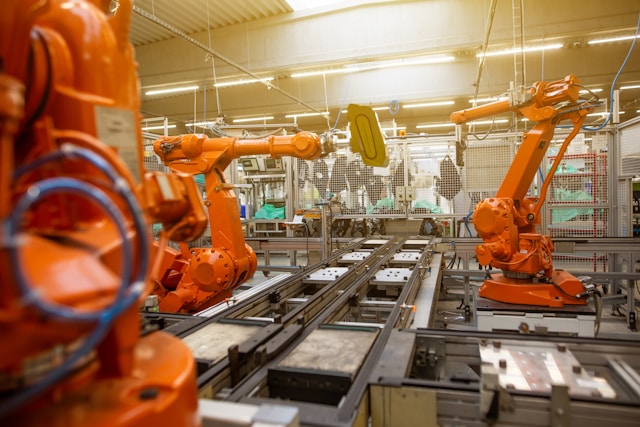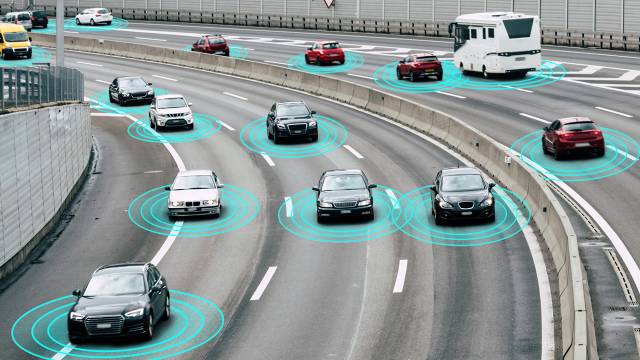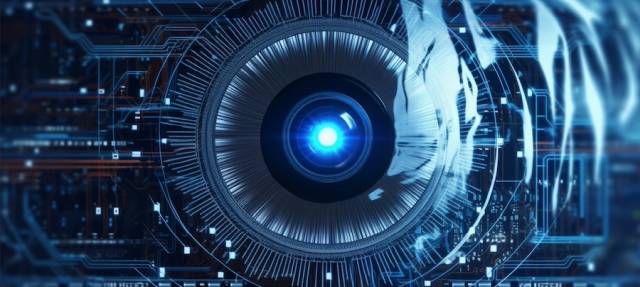Ever stop and think about how computers actually “see”? Yeah, it sounds like something straight out of sci-fi, but honestly, it’s quickly becoming a really central part of the tech we use every day. This amazing ability is called AI Vision, or artificial intelligence vision, and trust me, it’s shaking things up big time across the tech world. Basically, think of it as giving machines the power of sight and the smarts to understand what they’re seeing – kind of like how we do, but often way faster and sometimes even more accurately.
What’s AI Vision All About and Why Should You Care?
At its core, AI Vision is this cool mix of cameras, data, and smart algorithms that lets computers make sense of images and videos. It leans heavily on machine learning, especially that deep learning stuff you hear about, to spot objects, people, patterns, and even things that look out of place.

Now, why is this such a game-changer? Well, the possibilities are pretty huge. Imagine systems that can spot diseases on medical scans with incredible accuracy, maybe even better than a human doc sometimes. Or think about cars navigating busy city streets all by themselves, or security systems that can identify potential threats the moment they happen. This isn’t just about fancy gadgets; it’s about building smarter, safer, and just plain more efficient systems everywhere. It’s becoming super clear how AI vision is transforming the tech industry – it’s gone from a niche idea to a fundamental piece of tech innovation driven by AI.
Changing Industries: How It’s Being Used Right Now
1. Robotics and Automation:
Okay, one of the places you really see this shine is in robotics and automation. Picture those giant manufacturing lines. AI Vision systems are guiding robot arms with pinpoint precision, checking products for tiny flaws faster and more reliably than we ever could, and even managing warehouse chaos by identifying and sorting packages. Companies like Amazon? They’re using sophisticated AI vision in their fulfillment centers to make everything run smoother. It’s not just about replacing human jobs, but really boosting what’s possible, letting robots work better alongside people in tricky situations.

2. Healthcare Tech:
Seriously, the future of AI vision in healthcare technology looks incredibly promising. AI algorithms can look at medical images – like X-rays, CT scans, MRIs – and pick up on subtle signs of diseases like cancer or diabetic retinopathy, sometimes much earlier than a human expert might. This helps speed up diagnosis and get treatment plans rolling faster. Plus, AI vision is even helping out in robotic surgery, giving surgeons better views and guiding tools with amazing precision. Computer vision is really turning into a powerful helper for doctors and medical pros.
3. Cybersecurity Stuff:
Wait, how can seeing help keep things secure online? Good question, right? The role of AI vision in boosting cybersecurity might not seem obvious at first, but it’s actually pretty important. AI vision can be part of multi-factor authentication – think facial recognition or scanning your iris. It can also keep an eye on who’s physically accessing secure areas. And in a more abstract way, AI-powered visual analytics can spot weird patterns in data, potentially flagging security breaches that might otherwise slip through the cracks.
4. Smart Cities:
Imagine cities that just work better – smoother traffic, safer streets. AI vision is driving advancements in smart cities and making this happen. These systems watch traffic flow, tweak traffic light timing, find open parking spots, and spot accidents or road hazards almost instantly. Public safety gets a boost too, with smart surveillance that can identify suspicious behavior or help find missing people, all while trying to respect privacy using techniques like anonymization. Pretty cool, huh?

5. Keeping an Eye on the Environment:
To take care of our planet, we need better info, right? AI vision is improving environmental monitoring technologies by giving us powerful new tools. Drones flying with AI vision cameras can scan huge areas to monitor deforestation, track animal populations, find pollution sources like oil spills, or check on crop health for smarter farming. This lets us react faster to environmental problems and manage our resources more sustainably.

6. Cars and the Automotive World:
That big push towards self-driving cars? It leans heavily on AI vision’s contributions to automotive industry innovations. Cars use a bunch of cameras and sensors, combined with AI vision smarts, to understand what’s around them – spotting other cars, people walking, traffic signs, lane markings, you name it. This is the foundation for those Advanced Driver-Assistance Systems (ADAS) we’re seeing more of, and it’s the absolute core tech for fully self-driving vehicles. Companies like Tesla are basically walking case studies of AI vision in tech innovation here.
How It Plays Nice with Other Tech
- Internet of Things (IoT): When you integrate AI vision with IoT devices, you get some seriously intelligent systems. Think about smart home cameras that don’t just record footage but actually understand what they’re seeing (like telling the difference between your cat and an intruder). Or imagine industrial sensors that visually inspect machinery and predict when it might break down.
- Predictive Analytics: The effectiveness of AI vision in predictive analytics is really taking off. By analyzing visual data over time (like satellite images or footage from a factory floor), AI can start predicting things like equipment failures, estimating crop yields, or even forecasting traffic jams before they happen.
- Augmented Reality (AR): The development of AI vision for augmented reality experiences is leading to some awesome new applications. AI vision figures out what objects or places are in the real world, letting AR systems overlay useful digital info right on top. Imagine a technician seeing repair steps projected onto a machine, or you visualizing how that new couch would look in your living room before buying it.
The Challenges and What’s Next
Okay, so even with all this amazing potential, it’s not all smooth sailing. There are some significant challenges facing AI vision implementation:
- Loads of Data Needed: Getting AI vision models to be accurate means feeding them tons and tons of high-quality, labeled data. Gathering and preparing that data? It can be expensive and take a lot of time.
- Serious Computing Power: Processing all that complex visual info takes a lot of computing muscle.
- Bias and Ethics – A Big One: Uh oh. If the data used to train these models has biases in it, the AI can end up making unfair or even discriminatory decisions (like facial recognition not working well for certain groups). Making sure this tech is developed and used ethically is super important.
- Handling the Unexpected: Getting these systems to work reliably in all sorts of real-world conditions – think bad lighting, crazy weather, or seeing something totally unexpected – is still a tough nut to crack.
- Privacy Worries: Using AI vision widely, especially out in public, definitely brings up valid concerns about privacy. We need careful thought and clear rules around this.

But even with these hurdles, the momentum is definitely there. Investment trends in AI vision technology startups are through the roof, showing tons of confidence and pouring fuel on more research and development. We’re constantly seeing AI evolve in tech, pushing the limits of what we thought was possible.
Learning and Looking Ahead
This rise of AI Vision means we need to think differently about learning and jobs. The educational impacts of AI vision in tech training are already showing up. Universities and training programs are adding courses on AI, machine learning, and computer vision to get the future workforce ready with the right skills.
Looking down the road, the impact of AI vision on future technology trends is probably going to be even bigger. Expect smarter AI-powered tools popping up in almost every industry, more integration into our daily lives, and continued breakthroughs thanks to deep learning. Artificial intelligence vision isn’t just part of future tech anymore; it’s really becoming a core piece, changing how we interact with both the digital and the physical world around us.
So, what are your thoughts on AI Vision taking off like this? Can you think of other ways it might reshape things down the line? It’s moving fast, and it’s definitely a journey worth keeping an eye on!
